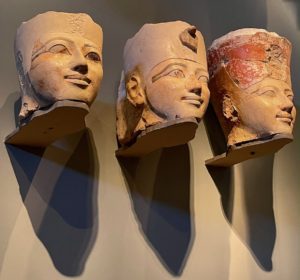
Remember that famous photo from King Tut’s tomb, when Howard Carter saw the glint of gold and “wonderful things” as he peeked through a small hole in 1922? Carter’s candle flame almost went out as gaseous air escaped from Tut’s underground burial site. Until Carter peered in with his candle, whoever sealed up this door was the last to see inside Tut’s tomb, more than 3000 years ago.
What happened to all that stuff? And what about all those other ‘wonderful’ things the tomb robbers and archeologists carted off, centuries ago? Egypt’s excavated tombs stand mostly empty today, and next week we’ll view their painted walls, stone sarcophagi, and a mummy or two, including King Tut’s, which still lays in the tomb where he was found.
Most of the rest of the loot sits in museums around the world, a diaspora of Egypt’s best treasures. We’ll see some of the Tut tomb contents next week in Cairo’s Egyptian Museum. But the chariots you see in this famous tomb photo have already been moved to the new Grand Egyptian Museum in Giza, whose final completion date keeps getting pushed back. Boo. No Grand Egyptian Museum for us this time.
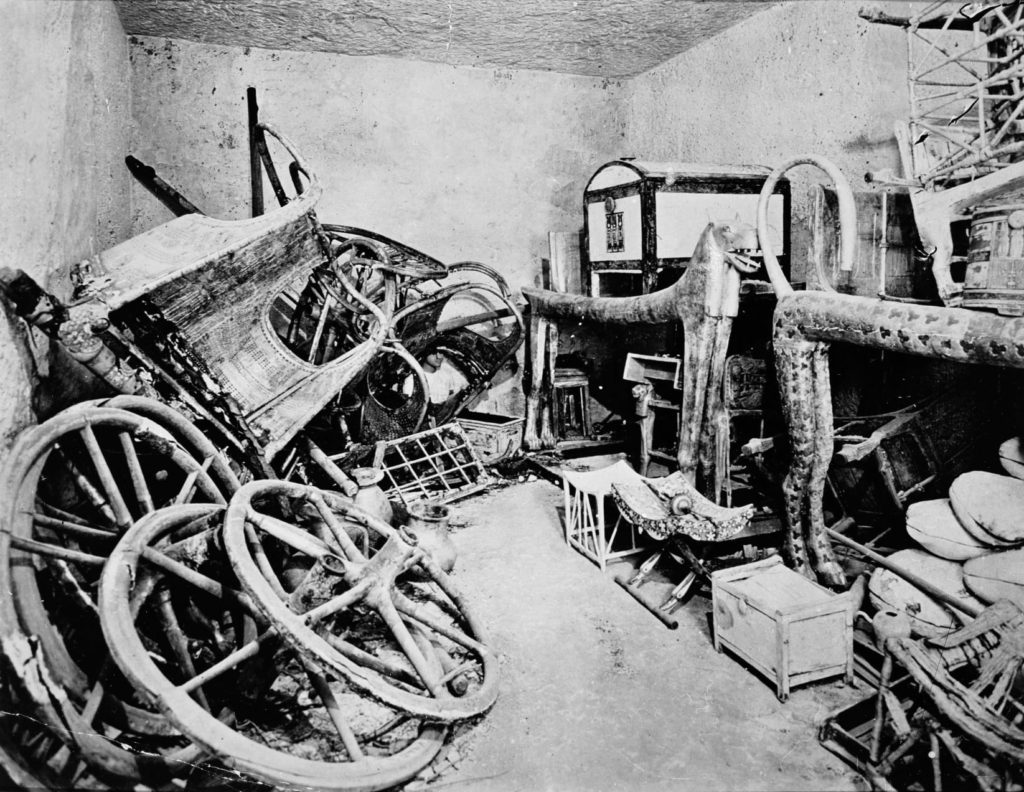
But yay! Some of the best stuff is in in New York City, at the Metropolitan Museum of Art. We spent the morning strolling like locals through Central Park, then immersed ourselves in the Met’s massive Egyptian collection until it felt as if our heads were about to explode, in the best way.
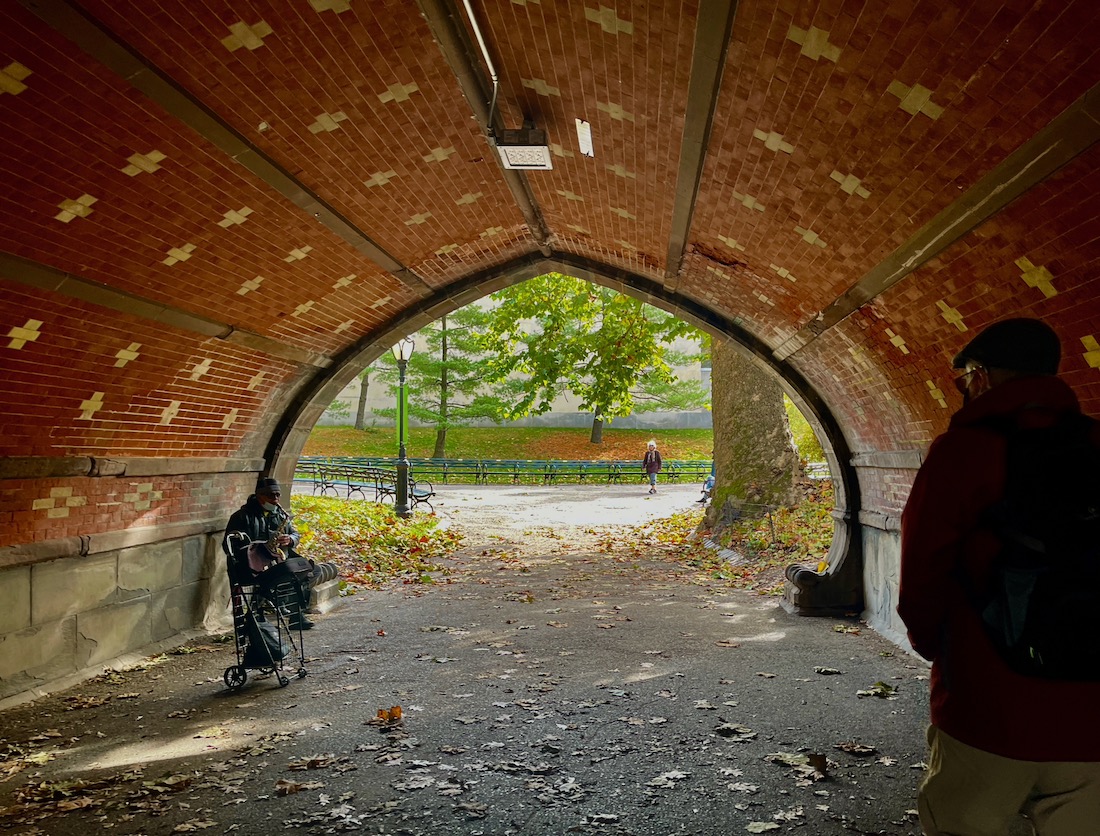
CENTRAL PARK STROLL ON A SATURDAY MORNING
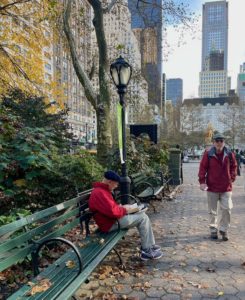
Walkers, runners, nannies, the homeless, tourists, birthday party attendees. Everyone was there, sunny skies drawing all the apartment dwellers to New York’s backyard. We made note of the sparsity of horse-drawn carriages and tour buses. New York still seemed half empty to us compared to our last two visits. (although we found the surging crowds later in Times Square and on Broadway.)
Just behind the MET building, we located our first Egyptian treasure of the trip, Cleopatra’s Needle. The ‘Needle’ has nothing to do with Cleopatra. This towering obelisk decorated one of her temples in Alexandria centuries ago, hence the nickname. Before that, it stood outside the Temple of the Sun in the ancient Egyptian city of Heliopolis, roughly 3,500 years ago, in honor of Thutmose III and the sun god Ra. Very, very, very old.
So how did this ancient obelisk end up here in Central Park, behind the MET Museum? New Yorkers have frolicked around the thing for over a hundred years, many with no clue what it was, no doubt.
Turns out that when Egypt-mania took hold worldwide in the late 1800s, up and coming cities such as New York wanted their own Egyptian obelisks to show how cool they were (basically). London had one, Rome had several, France had one, so New York had to have one as well. Because of that obelisk-collecting trend, few obelisks remain in Egypt today.

Egypt gifted the obelisk to New York as a goodwill gesture, but New York had to transport it from Egypt, an incredible engineering feat that took years to accomplish.
And New York almost lost it again, when in 2011 Egypt grumbled that the Americans were neglecting it, and they might take it back. Turns out New York’s soot and grime, plus moist winter weather, had eroded the obelisk’s surface and hieroglyphs.
Restoration experts prevailed, though, and the refurbished obelisk sits proudly in place, even though Central Park is so NOT Eqypt. Today, the MET’s refurbishers take good care of it. I’m sure they don’t have to give it back any time soon, even though maybe they should? (Not going to happen, probably not.)
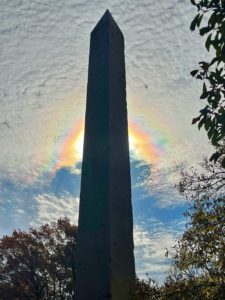
METROPOLITAN MUSEUM OF ART
We showed our vaccine certificates and ID to enter the Met Museum, and produced our documents again to eat our hotel breakfast in the breakfast room, to see Wicked, to eat in a steak house. We appreciated NYC’s strict vaccine requirements since we do not want to catch a breakthrough case of Covid. That would be the end of the Egypt trip dream, right there.
Sure, we could still catch a case of mild Covid from vaccinated folks, but the data says that vaccinated folks are waaaaay less likely to transmit the virus to us than the unvaccinated folks, especially those wearing masks. Love that data.
At home I’m nervous to take my mask off to eat because I know that someone in the room might not be vaccinated. Not here. It’s a relief, the checking, at least for now, and NYC has one of the lowest rates of infection in the nation right now because of it. So yay New York!

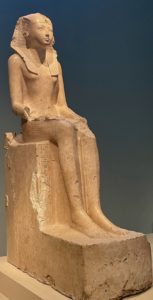
On to the Egyptian rooms. We had been there before, but last time we hadn’t completed a 48-lecture course on Ancient Egypt and weren’t headed to Egypt right after the visit. This time, the MET collection made perfect sense, especially since Dr. Brier’s course and the museum collection are both arranged chronologically. By the time we reached the Temple of Dendur and the last of the Egyptian rooms, we were ready to tumble into our very own stone sarcophagi and rest for several centuries.
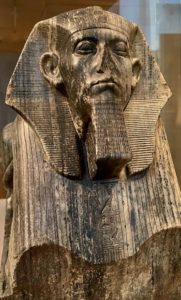
I could have lingered in Queen Hapshetsut’s statue room for hours, same way I felt on my last visit, since her story is so impressive. Hapshetsut brought peace and prosperity to Egypt for two decades, from 1473-1458 BC. She declared herself king with no apologies, donned the Pharoah’s beard proudly, and commenced building programs that brought economic prosperity to the land. And no wars during her reign. Imagine that! She was one of only two full female Egyptian pharaohs, and maybe it would have been a good thing to have a few more?
We’ll visit her temple in Egypt next week, and I will do my best to imagine in my mind’s eye the Met’s Hapshetsut statues gracing the grounds, as many of them did in ancient times. Her male predecessors did their best to cancel her by smashing statues and scratching her name off monuments, but they couldn’t erase her legacy, especially since her building projects were so much better than theirs. Nice try, fellas. Didn’t work. She’s well-known now, and you guys are footnotes. And that definitely mattered to the Egyptians, because how – and if – you were remembered could dictate whether or not you thrived in the afterlife.
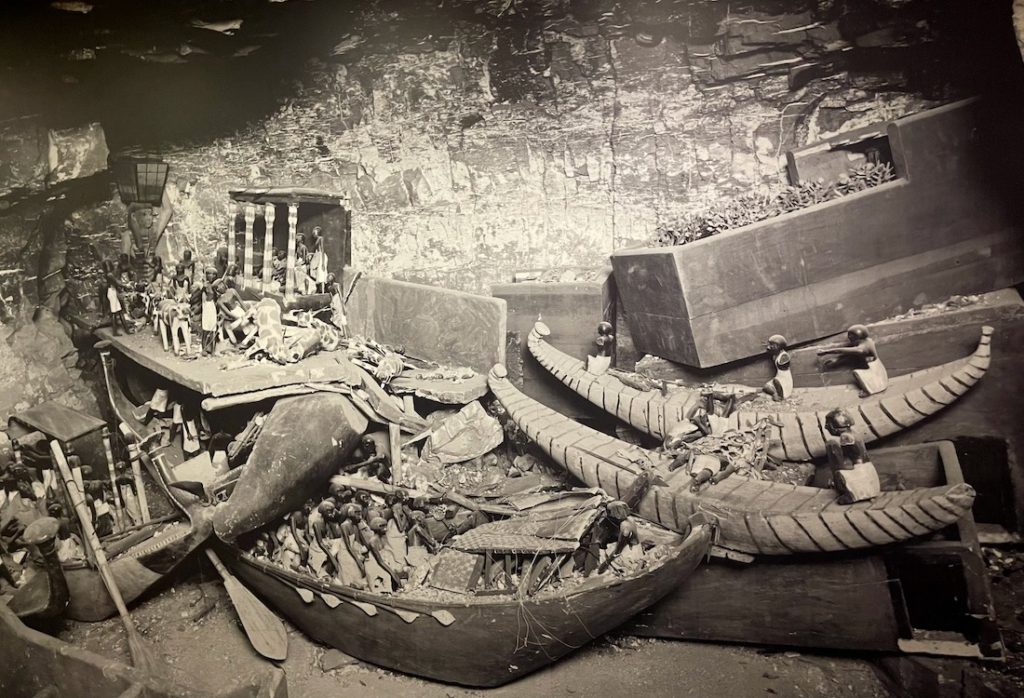
A pharaoh’s afterlife river boats were discovered in a tomb in 1920. 1981–1975 B.C.Middle Kingdom 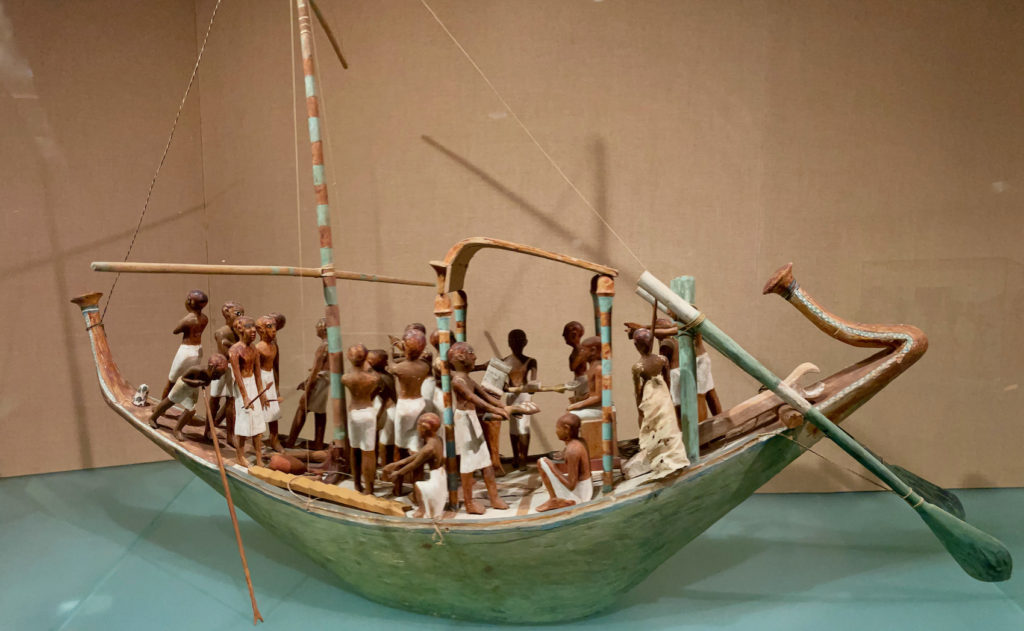

Mechanical Dog 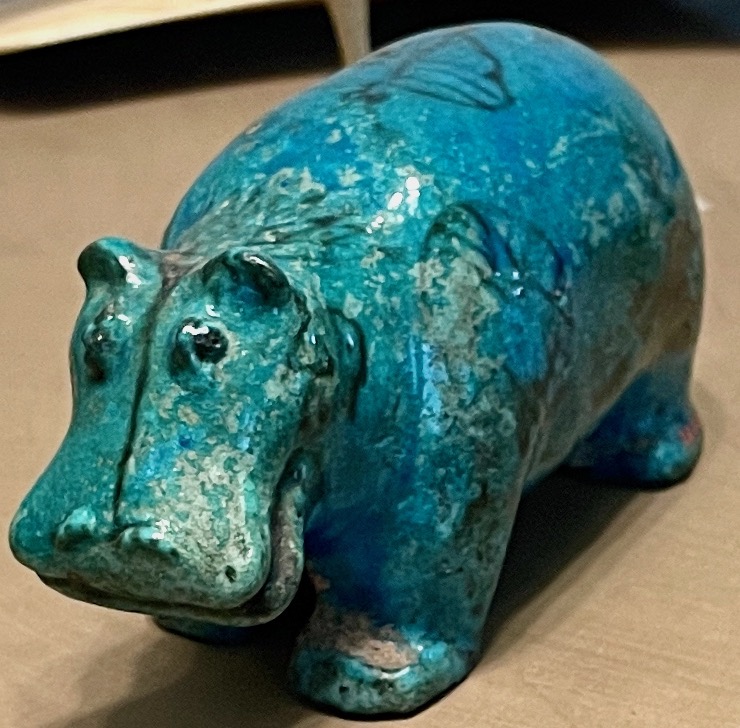
William the Hippo
And then there was the Boat Room, where tiny figures rowed the Pharoah’s boats through the underworld’s river; the famous Blue Hippo (the MET’s mascot), with three broken legs so the hippo couldn’t rise up and attack the pharoah in the afterlife; and the incredibly realistic mechanical dog. Turns out Egyptians loved pets, both cats and dogs, and wanted their furry companions to accompany them after death. So they not only put models of pets in their tombs, they put the real pets there as well, after they mummified them. I mean, why not?

Yet there is also so much more to the MET than its Egyptian rooms. We attempted to visit a few favorite American and European artists on the second floor but started squabbling over the map, a sure sign it was time to stop and eat. So we set off to locate a recommended chop house for an early dinner. We were headed to Smith and Wollensky’s Steakhouse, which we picked off a great list of Midtown restaurants in the New York Times. (FYI it lived up to its rating. We ate there twice.)
MIDTOWN WEATHER
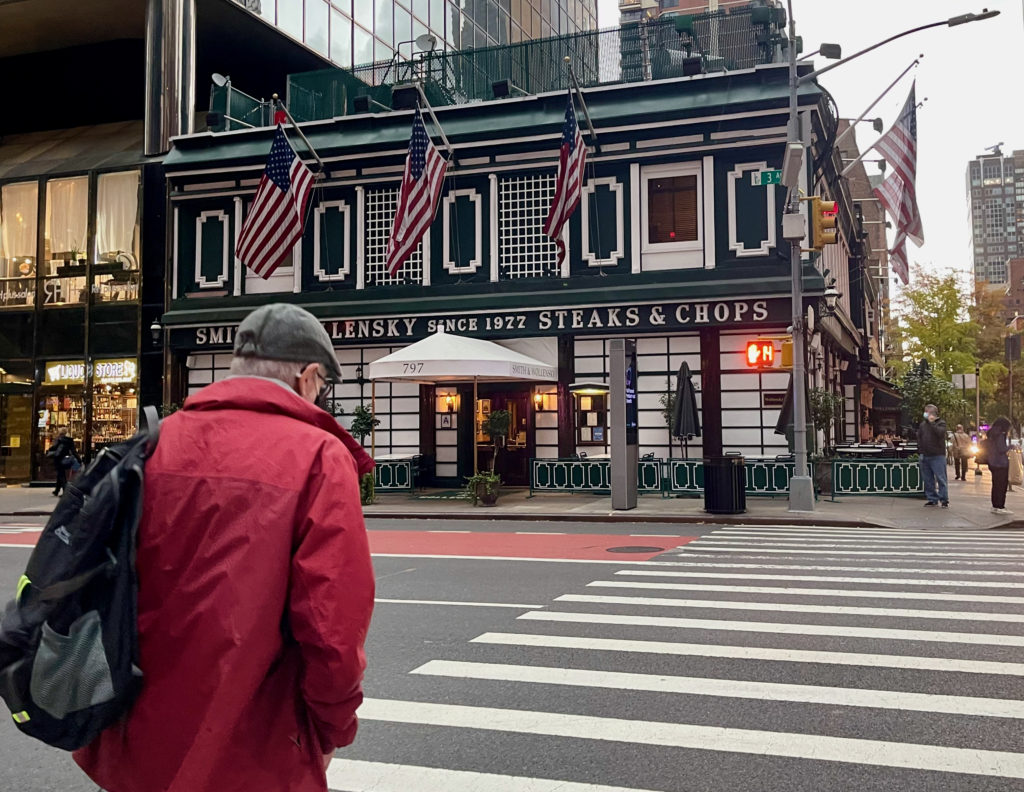
Soon after Uber dropped us back on 49th Street, our phones started flashing Severe Weather Warnings, and sure enough the heavens rained down halfway through our meal. (Good thing we didn’t walk back, Padre. Bad idea, although most of your ideas are good ones, just sayin’.)
Booms of lightning, crashes of thunder, then sheets of pebble-sized hail bounced off the sidewalks. A blanket of soggy hailstones quickly piled up on the grey sidewalks outside. We watched through watery windows as the hail pounded on the roof, and even the wait staff stopped to watch the commotion outside.
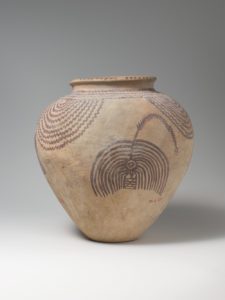
Down on the ground underneath Manhattan’s cavernous skyscrapers it’s easy to forget the sky is up there, but today the heavens made sure to let us know they could have their way with us, the tiny humans, down below. No wonder Egyptians spent so lavishly on their tombs, preparing for the afterlife to please the gods. The Nile River dictated all things life and death, good and bad, and its provenance depended on floods.
We forget sometimes how influential weather is in terms of cultural development or failure, and nowhere is this more true than Ancient Egypt. Without the yearly floods, ancient Egyptian civilization would not have existed. Images of river plants, fish, birds, and grain were featured prominently in the art we saw today. And while the arrogant sphinx king seems to sneer at us that he is sooooooo powerful, the towering stone pillars nearby, carved to look like river reeds, suggest maybe not.
All was back to normal by the time we walked back to our hotel a block over, and that slushy sidewalk hail had melted away as if nothing had happened. Speaking of hotels: the Best Western Hospitality House IS a hotel, but it feels more like a small New York apartment, where the view is of another building’s ductwork. Typical squeezed-tight reception area, but upstairs…800 square feet, with bedroom and kitchen (which we didn’t use except for coffee and heating pizza. So New York!). Highly recommend this place.

More New York-type tourist activities coming up, before we board our Egyptair flight for Cairo – oh wow we are almost there. Hope we have strong wifi once we reach Egypt so I can keep posting, but if not I’ll catch up when I can.

And also: We took our turn as audience members (and participants!) at The Late Show with Steven Colbert. And a special surprise (especially to us!) – Lady Gaga just happened to stop by.
Thanks, everyone, as always, for following along!
